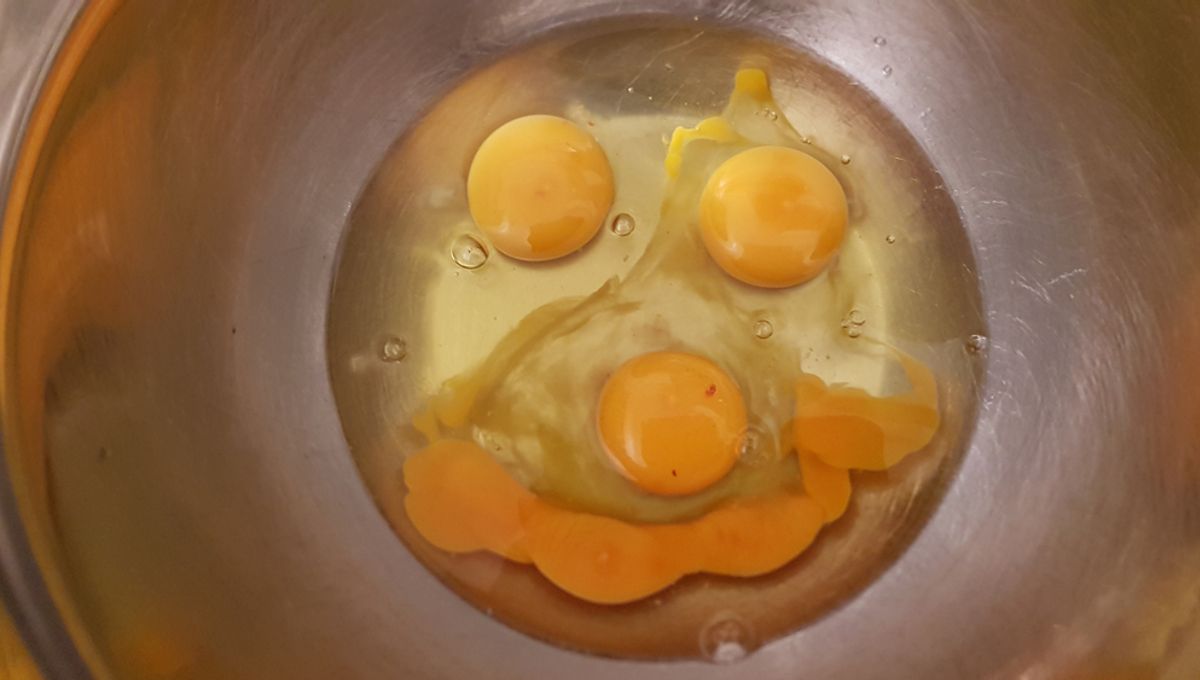
Ever cracked open an egg, only to find a mysterious red or brown spot? Whilst the sight might be a bit off-putting, eggs with these spots can be perfectly safe to eat, and there’s a solid explanation for their appearance too.
Red and brown spots in eggs are usually either blood or meat spots. These spots aren’t particularly common; in commercially produced eggs, less than 1 percent of those laid have them. Those that do are often removed after “candling” a process in which a bright light is shone through an egg to highlight imperfections. However, some spotted eggs can slip through the cracks.
How are blood and meat spots formed?
Both types of spots can occur during the egg formation process.
Blood spots can form during ovulation, either in the ovary itself or in the tube between a chicken’s ovary and uterus, called the oviduct. Eggs begin forming in fluid-filled sacs, known as follicles, within the ovary; follicles have a dense network of blood vessels.
These vessels can bleed when the follicle ruptures to release the egg, and the blood that leaks out can adhere to the surface of the egg yolk – this is why blood spots are usually found on the yolk. However, blood spots can occasionally be found in the egg white when bleeding occurs in the oviduct.
Meat spots, on the other hand, are made up of tissue picked up by the egg whilst passing through the oviduct and so are usually found in the egg white. Although they are usually brown, they can also be red or white. As blood can turn brown because of oxidation, blood spots can sometimes be mistaken for meat spots.
Why do they occur?
There are a number of factors that could contribute to the formation of a blood or meat spot. Research has found that hen age, nutrition, the environment they live in, and genetics can all play a part.
For example, studies have identified that a lack of vitamin A in their diets increases the likelihood of hens laying eggs with blood spots. It’s also thought that stressful environments, either due to loud noise, the presence of infectious bacteria or viruses, or temperature changes can also lead to an increased incidence of spots.
Are they safe to eat?
According to the Egg Safety Center, eggs with blood or meat spots are perfectly safe to eat, as long as the egg is properly cooked. If their appearance is still making you feel a bit queasy, because the egg is safe to consume, spots can also simply be removed.
In other words, it’s fine to egg-nore them and carry on making that omelet.
All “explainer” articles are confirmed by fact checkers to be correct at time of publishing. Text, images, and links may be edited, removed, or added to at a later date to keep information current.
Source Link: What Are Those Red And Brown Spots You Sometimes See In Cracked Chicken Eggs?